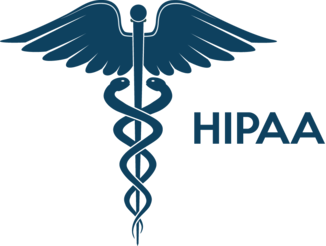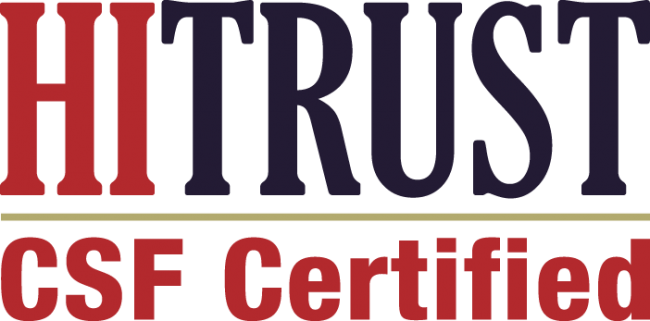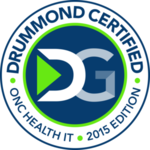The United States is grappling with an unprecedented behavioral health crisis that demands immediate, innovative solutions. As healthcare systems struggle to meet the surge in demand for mental health services, forward-thinking organizations are turning to integrated care models and digital health platforms to bridge critical gaps in service delivery. At the forefront of this transformation is HealthViewX, whose comprehensive behavioral health integration and psychiatric collaborative care management solutions are reshaping how providers deliver mental health care across the nation.
The Magnitude of America’s Behavioral Health Crisis
The statistics surrounding behavioral health in America are both staggering and sobering. Over 50 million Americans—equivalent to 1 in 5 adults, adolescents, and youth—experienced a behavioral health issue between 2019 and 2020. This crisis extends far beyond individual suffering; it represents a systemic challenge that affects every community, healthcare system, and economic sector nationwide.
The numbers reveal the depth of the challenge: more than one out of every five adults currently lives with a mental illness, while approximately 19.1% of adults have experienced an anxiety disorder within the past year. Among adolescents, the situation is even more alarming, with nearly half experiencing some form of mental disorder during their lifetime. Additionally, 15.35% of adults reported having a substance use disorder in 2024, highlighting the complex, interconnected nature of behavioral health challenges.
The economic impact is equally significant. The U.S. behavioral health market reached USD 92.2 billion in 2024 and is projected to grow to USD 151.62 billion by 2034, expanding at a compound annual growth rate of 5.1%. This growth trajectory reflects not only the increasing prevalence of behavioral health conditions but also the expanding recognition of mental health as a fundamental component of overall healthcare.
The Infrastructure Challenge: Workforce Shortages and Access Barriers
The most pressing obstacle to addressing America’s behavioral health crisis is the severe shortage of qualified professionals. Approximately 122 million Americans live in areas designated as mental health provider shortage areas, with more than 6,000 additional practitioners needed nationwide to meet current demand. This shortage has created a healthcare system characterized by overwhelming caseloads, extended wait times, and limited access to specialized care.
The workforce crisis extends beyond raw numbers. Geographic disparities compound the problem, with rural and underserved communities facing particularly acute shortages. 160 million people live in designated Mental Health Professional Shortage Areas, creating barriers that disproportionately affect vulnerable populations who already face multiple challenges in accessing healthcare.
Despite growing awareness of mental health issues, significant treatment gaps persist. Only half of people with mental illnesses receive treatment, leaving millions of Americans without the behavioral health care they need. Among those who do access services, 17.7 million adults experienced delays or cancellations in appointments, while 7.3 million faced delays in obtaining prescriptions.
The Promise of Integrated Care Models
Traditional approaches to behavioral health care, where mental health services operate in isolation from primary care, have proven inadequate to meet current demands. The solution lies in integration—bringing behavioral health services directly into primary care settings where most patients first seek help for their health concerns.
The integration of behavioral health services into primary care is a crucial step toward improving healthcare outcomes in the U.S. This approach recognizes that mental health and physical health are inextricably linked, and that effective treatment requires a holistic, coordinated approach to patient care.
Research consistently demonstrates that integrated care models improve patient outcomes while reducing costs. Nearly 75% of primary care practices engage in behavioral healthcare, yet two-thirds of PCPs can’t connect patients with accessible follow-up services, highlighting the critical need for systematic approaches to integration that go beyond informal referral networks.
HealthViewX: Leading the Behavioral Health Integration Revolution
HealthViewX has emerged as a leader in addressing these challenges through comprehensive digital health platforms that enable seamless behavioral health integration. Behavioral Health Integration is an approach that embeds mental health services into primary care settings, creating a collaborative model where primary care providers (PCPs), psychiatrists, and behavioral health specialists work together to improve mental health outcomes.
The HealthViewX platform addresses the entire spectrum of behavioral health integration needs through several key components:
Patient Identification and Screening
Routine screening for mental health conditions such as depression, anxiety, and substance use disorders forms the foundation of effective behavioral health integration. HealthViewX enables primary care providers to implement systematic screening protocols that identify patients with behavioral health needs early in their care journey, when interventions are most effective.
Seamless Care Coordination
Seamless collaboration between PCPs, behavioral health specialists, and care managers is essential for successful integration. HealthViewX facilitates this collaboration through unified digital workflows that connect all members of the care team, ensuring that patient information flows seamlessly between providers and that care plans are coordinated across disciplines.
Evidence-Based Treatment Protocols
The platform supports the implementation of evidence-based treatment approaches, ensuring that patients receive care that is grounded in the latest research and clinical best practices. This includes support for measurement-based care, which uses standardized assessment tools to track patient progress and inform treatment decisions.
The Collaborative Care Model: A Proven Framework for Success
Central to HealthViewX’s approach is support for the Collaborative Care Model (CoCM), an evidence-based, integrated care approach that addresses mental and substance use conditions in primary care settings. CoCM is considered to have one of the strongest evidence bases of any integrated behavioral health model, and more than 90 randomized clinical trials have demonstrated its cost-effectiveness and positive impact on patient outcomes across many settings and population groups.
The Collaborative Care Model brings together a multidisciplinary team that includes:
Primary Care Providers (PCPs)
PCPs serve as the cornerstone of the collaborative care team, providing ongoing medical care while working closely with behavioral health specialists to address mental health concerns. Their central role ensures that behavioral health care is integrated into the patient’s overall health management strategy.
Behavioral Health Care Managers (BHCMs)
A primary care provider (PCP), behavioral health care manager (BHCM), and psychiatric consultant work together to deliver comprehensive care. BHCMs serve as the primary coordinators of behavioral health services, providing short-term interventions, coordinating care, and ensuring that patients receive appropriate follow-up services.
Psychiatric Consultants
Psychiatric consultants provide specialized expertise to the care team, offering consultation on complex cases, medication management guidance, and support for treatment planning. Their involvement ensures that patients have access to specialized knowledge without the traditional barriers associated with psychiatric referrals.
Technology-Enabled Care Coordination
HealthViewX enables you to implement and bill for CoCM codes while establishing a team to collaborate synergistically on the care of behavioral health patients. The platform provides the technological infrastructure necessary to support collaborative care, including patient registries, care coordination tools, and billing support that enables practices to implement and sustain these models.
Addressing Implementation Challenges Through Technology
One of the primary barriers to implementing behavioral health integration has been the complexity of coordinating care across multiple providers and ensuring that all team members have access to the information they need. HealthViewX addresses these challenges through several key technological innovations:
Unified Digital Workflows
Integrated digital health platforms unify medical, behavioral, and care management workflows to streamline the delivery of behavioral health services. This integration eliminates the silos that traditionally separate behavioral health from primary care, creating a seamless experience for both providers and patients.
Real-Time Communication and Collaboration
Digital platforms like HealthViewX bridge the gap between behavioral health providers and primary care teams, enabling: Closed-loop referrals for psychiatric and substance use care. Real-time communication between team members ensures that care decisions are made collaboratively and that patients receive timely interventions.
Population Health Management
Population-Based Care: Uses registries to track and follow up with patients proactively is a cornerstone of effective behavioral health integration. HealthViewX enables practices to maintain comprehensive patient registries that support proactive outreach and ensure that patients don’t fall through the cracks.
Revenue Optimization and Sustainability
A critical factor in the success of behavioral health integration initiatives is financial sustainability. HealthViewX addresses this challenge by providing comprehensive billing and revenue optimization support that helps practices maximize their return on investment while expanding access to care.
CoCM Billing Support
HealthViewX enables you to implement and bill for CoCM codes while establishing a team to collaborate synergistically on the care of behavioral health patients. The platform provides the documentation and billing support necessary to ensure that practices can capture appropriate reimbursement for collaborative care services.
General Behavioral Health Integration Services
Our HIPAA software helps grow revenues through General BHI Services and manage more patients through efficient workflow automation and staff utilization. This comprehensive approach to revenue optimization ensures that practices can sustain their behavioral health integration efforts while expanding their capacity to serve more patients.
Meeting the Needs of Diverse Healthcare Settings
HealthViewX’s solutions are designed to meet the unique needs of various healthcare settings, from large health systems to community health centers and private practices. This flexibility is crucial given the diverse landscape of American healthcare delivery.
Community Health Centers and FQHCs
To address the behavioral health crisis, the Centers for Medicare & Medicaid Services (CMS) have introduced several Behavioral Health Integration (BHI) programs aimed at improving access to mental health services: Psychiatric Collaborative Care Model (CoCM): This evidence-based model involves a team-based approach where a primary care provider collaborates with a psychiatric consultant and a behavioral health care manager to deliver integrated mental health care.
Community health centers, which serve as safety-net providers for underserved populations, face unique challenges in implementing behavioral health integration. HealthViewX provides specialized support for these settings, helping them navigate the complexities of serving diverse patient populations while maintaining financial sustainability.
Primary Care Practices
For primary care practices looking to expand their behavioral health capabilities, HealthViewX offers scalable solutions that can be adapted to practices of different sizes and patient populations. The platform’s flexibility allows practices to start with basic integration services and gradually expand their capabilities as they build expertise and capacity.
The Future of Behavioral Health Integration
As the demand for behavioral health services continues to grow, integrated care models supported by robust technology platforms will become increasingly essential. As demand for mental health services continues to grow, integrating behavioral health into primary care will remain a critical strategy for improving population health.
The success of behavioral health integration depends on several key factors:
Continued Investment in Technology
Digital health platforms like HealthViewX will continue to evolve, incorporating new technologies such as artificial intelligence and machine learning to enhance care coordination and improve patient outcomes. These technological advances will enable more sophisticated population health management and personalized care approaches.
Workforce Development
While technology can help optimize existing workforce capacity, addressing the behavioral health crisis will also require continued investment in workforce development. This includes training programs for behavioral health care managers, support for psychiatric consultants, and ongoing education for primary care providers.
Policy Support
Continued policy support for behavioral health integration, including appropriate reimbursement for collaborative care services, will be essential for widespread adoption of these models. The expansion of CoCM billing codes and other integration-focused reimbursement mechanisms represents important progress in this area.
Measuring Success: Outcomes and Impact
The effectiveness of behavioral health integration initiatives can be measured through several key metrics:
Patient Outcomes
Integrated care models consistently demonstrate improved patient outcomes, including reduced depression and anxiety symptoms, improved medication adherence, and higher patient satisfaction scores. With HealthViewX, providers can deliver high-quality, integrated care that meets the needs of their patients while driving better mental health outcomes across the board.
Access to Care
Integration models significantly improve access to behavioral health services by reducing wait times, eliminating traditional referral barriers, and providing care in familiar primary care settings. This is particularly important for populations that have historically faced barriers to accessing specialized mental health services.
Cost Effectiveness
Collaborative care models are highly cost-effective, reducing overall healthcare costs while improving patient outcomes. The integration of behavioral health services into primary care settings reduces the need for costly emergency department visits and hospitalizations related to untreated mental health conditions.
Conclusion: A Path Forward
The growing demand for behavioral health services in the United States represents both a significant challenge and an unprecedented opportunity to transform how we deliver mental health care. Traditional models of care delivery, characterized by siloed services and fragmented coordination, are inadequate to meet current needs.
The solution lies in comprehensive integration approaches that bring behavioral health services directly into primary care settings, supported by robust technology platforms that enable seamless care coordination. HealthViewX has emerged as a leader in this transformation, providing the tools and support necessary for healthcare organizations to implement effective behavioral health integration programs.
The evidence is clear: integrated care models work. They improve patient outcomes, reduce costs, and increase access to care. As we move forward, the widespread adoption of these models, supported by continued investment in technology and workforce development, will be essential for addressing America’s behavioral health crisis.
The time for incremental change has passed. The behavioral health crisis demands bold, comprehensive solutions that transform how we think about and deliver mental health care. HealthViewX’s behavioral health integration and psychiatric collaborative care management solutions represent a proven path forward, offering healthcare organizations the tools they need to meet the growing demand for behavioral health services while improving outcomes for the millions of Americans who need these critical services.
Success in addressing this crisis will require sustained commitment from all stakeholders: healthcare providers, technology companies, policymakers, and communities. By working together and leveraging proven solutions like those offered by HealthViewX, we can build a more responsive, effective, and accessible behavioral health system that meets the needs of all Americans.
The future of behavioral health care lies in integration, collaboration, and innovation. With the right tools and commitment, we can transform the landscape of mental health care delivery and ensure that no American goes without the behavioral health services they need and deserve.






